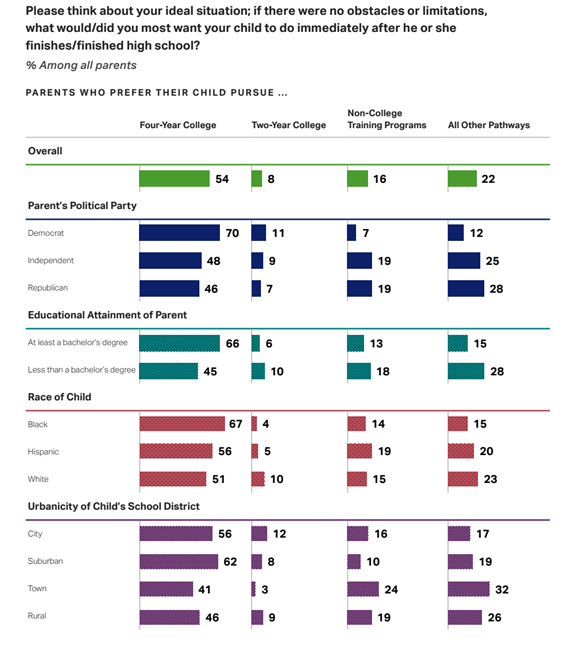

Her tail wagged.
Then, it wagged harder. Then she jumped on the table.
Gracie, our nine-year-old (give or take) Chihuahua mix, couldn't contain her excitement.
After a six-week delay, we finally got our new couch. But she wasn't thrilled about a new place to sleep during the afternoon.
The two men assembling it were talking in Spanish.
Gracie is a Hurricane Maria rescue dog.
Before she came to our home, she lived in Puerto Rico.
Her previous name was "Reina." And - she understands the Spanish language very well.
It'd been a while since she'd heard people speaking Spanish around her. She bounced around... staring at these men as if they'd beamed down from the heavens. "Bien, bien..." one of the men said while rubbing her belly.
It was a fun moment. I don't plan on talking to her in Spanish in the future, but I suppose I could play more Enrique Iglesias songs around the house. And I don't think we can take this act on the road.
It's sadly useless and unprofitable in the long run.
It's almost as useless as a college degree these days...
The Death of College
Three years ago, I wrote a lengthy creed on the expected demise of colleges and universities. The cost of college increased by more than 1,400% from 1978 to 2020. It's only getting worse.
Almost half of adults now prefer that their children DON'T go to a four-year university.

I have written several articles in the last year exploring how the return on investment for colleges has completely broken.
Universities aren't spending time helping students understand the return on their investment. And the United States government - which has a monopoly on college lending - doesn't give a damn what their students study. That's confounding, given they should want the economy to grow through worker productivity.
Just how bad is the disconnect?
A student at Northwestern (my alma mater) who studies economics can expect a $1.3 million net return over 20 years.
Asian studies? About $30,000.
Theater? MINUS $528,000.
Obviously, that's bad. But the worst example of any school I found was the Maryland Institute College of Art.
A graduate of that school is worse off financially in 20 years than someone who didn't even bother going to college.
These warnings about the death of universities have been a story of great interest for years - especially given my academic glutton for punishment.
But a recent article on the "death of college" has captured my attention.
Weinstein, a former policy advisor of the Clinton administration, taught me fiscal policy at Johns Hopkins School of Government.
He went on to become the school's dean.
In an article in Forbes, Weinstein warned of a double-barrel whammy coming at the American university system.
First, colleges have drastically expanded their administrative bloat over the last decade. Hiring has exploded.
In 2021, Yale had more administrators than students.
The never-ending quest for Diversity, Equity, and Inclusion administrators has accelerated this administrative bloat. These people can easily earn more than $200,000 per year. And I have no clue what they do.
All the while, schools like my alma mater have been paying actual professors "adjunct" wages that lead the teachers to quickly leave the building right after class to ensure they can work their second or fifteenth gig, like delivering Uber Eats on time.
During COVID, a private university asked me if I wanted to teach Economics 101 through a Zoom-style platform. The position was adjunct.
The pay? $17.50 per hour.
All the money is going to the administrators.
But they're about to face a reckoning.
College Reckoning
The second factor caught my attention: A MASSIVE decline in expected university headcounts in the years ahead. Writes Weinstein:
- Between 2025 and 2029, undergraduate headcount will drop by over 575,000 students (15 percent), and if recent history is an indicator, many schools will end up closing their doors rather than streamlining their operations.
It's easy to shrug and say good riddance to the system.
The U.S. government will give $175,000 in student loans to an 18-year-old but lock that same kid up for marijuana.
Want to study gender studies - which has a negative return on investment? Just sign this form kid. Then, they'll garnish their Starbucks paycheck for the next 27 years.
The Future of Education
Looking ahead, I expect that higher education will face a reckoning for the very reason that Weinstein explains. Some universities have no business operating and charging students $65,000 per year.
Virtually every non-public university that isn't ranked in the Top 200 will cease to exist by 2035.
The top-tier schools - like Harvard and Yale - will still be able to charge $75,000 a year, all in. Those legacy brands don't go away.
But I'll look for those schools to lease their names out to programs. I expect that they'll expand their hybrid and online programs. This will benefit companies like Coursera (COUR). You might be looking at a future where a school like Northwestern has 8,000 students on campus but educates 200,000 globally through certificate and credential programs. It might not be NU, but someone in that upper tier will do this.
The ability to generate revenue through these other streams should not be an excuse to hire more administrators. It should stabilize tuition for on-campus studies (which Weinstein notes as a successful model for Purdue University).
This strategy will likely be wildly popular.
Meanwhile, state universities will remain viable for students... as they should. For example, the University of Florida is a top 30 school in the U.S. (Top 5 in finance), costing... less than $7,000 yearly for residents. That's an insane value... and I'm trying to get my daughter to watch more Tim Tebow videos from the school's football national championship.
But the real winners will be in innovation.
Finally, schools like Purdue and Arizona State have first mover advantage in distance programs and tech innovation. Purdue runs the increasingly popular Purdue Global program, consistently increasing its enrollment.
Arizona State has experimented with a Netflix model for courses. A colleague told me they were also exploring a guaranteed enrollment for anyone who completed a digital course. That's interesting because it treats the student like a consumer - which ... it is.
People keep asking me: What's the future of education?
The future is one where schools treat students as consumers of a high-end, valuable product - that should deliver a solid return on investment... and doesn't turn into a constant charity case.
A friend of mine from Northwestern used to rant about the school, asking him for money after graduation. He explained that he purchased a degree in engineering from the school... and that this was the end of the transaction. Yet, there they were - selling degrees and asking students for thousands of dollars in donations.
He's then argued: It's not like Ford Motor Company (F) would call him a decade after he bought his Mustang (and ultimately sold it when he had two daughters for a completely different brand.)
He's right. And that's the big change that needs to happen within the world of schools. The ones that treat their students like consumers... and not children... will be the last ones standing when the reckoning ends.
And that reckoning is just getting started.
There will be a money-making trend in this story at some point. I need to dig a bit deeper. Stay tuned.
Stay positive,
Garrett Baldwin
Secretary of Finance
You can download a copy of this postcard by clicking here.


